Dutch Oven Cooking
May – June 2017
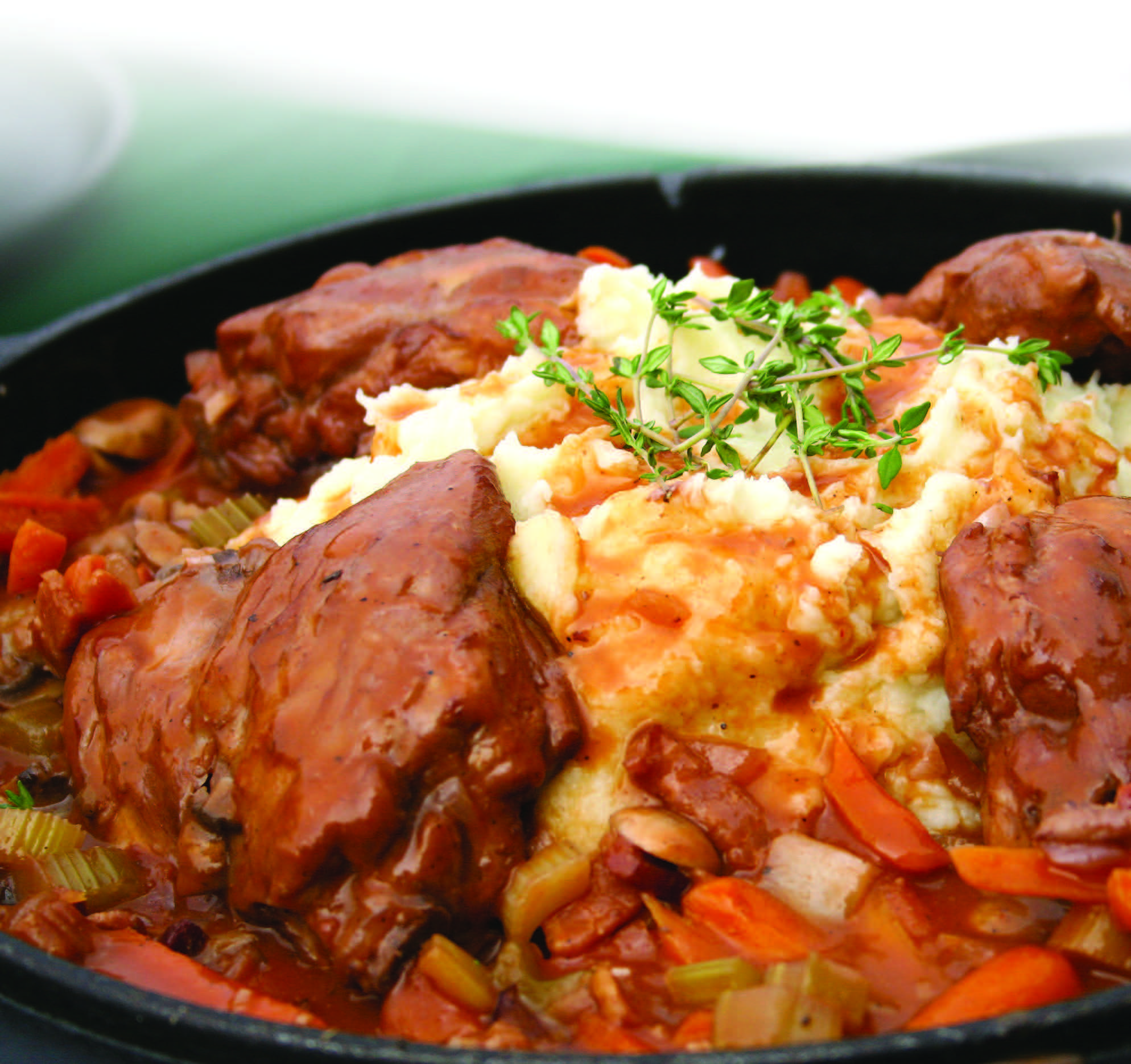
Nevada’s Dutch Touch
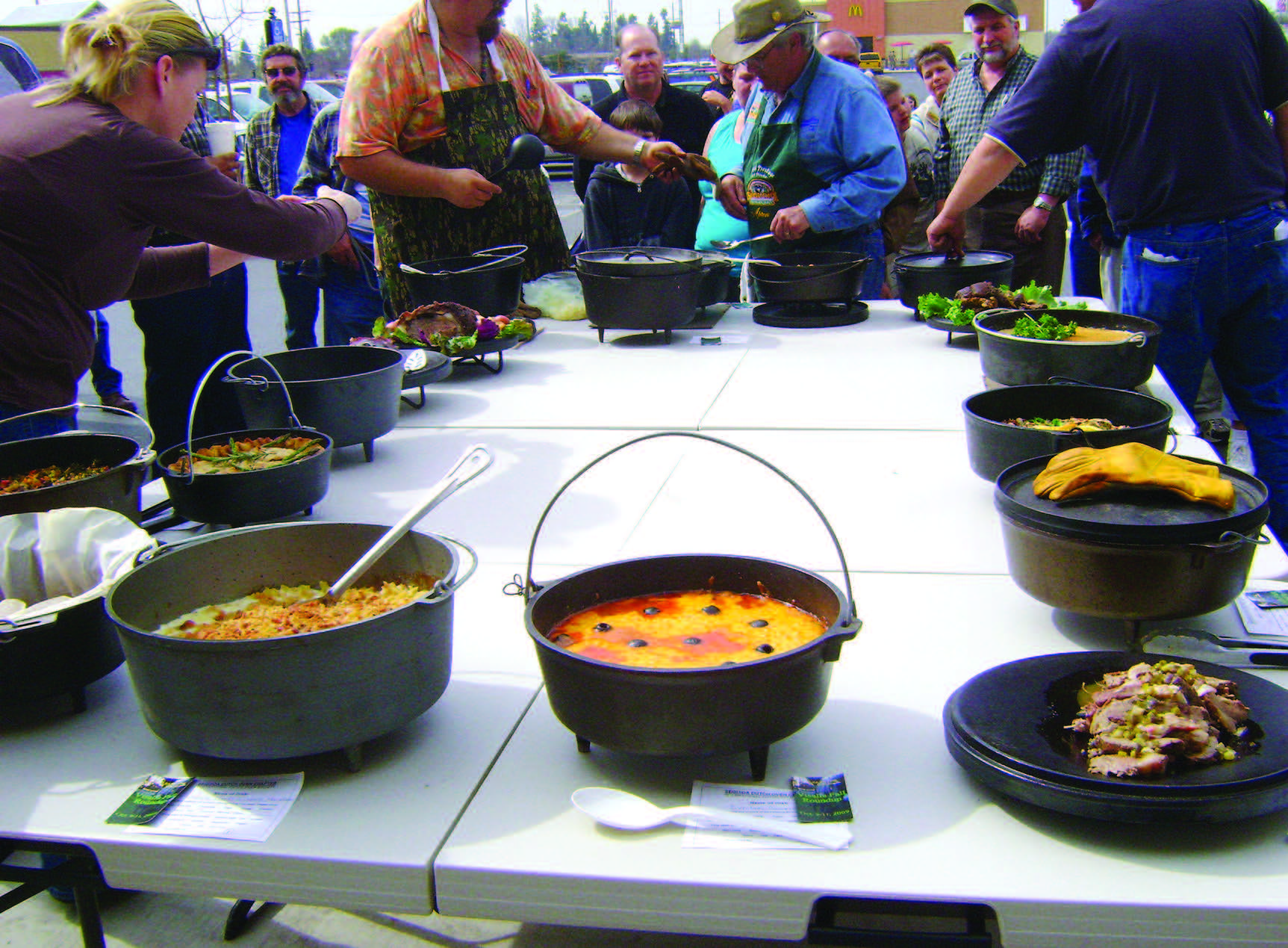
Dutch oven cooking seasons the soul.
BY ERIC CACHINERO
Paper towels and beer. These secret weapons line the arsenal of many experienced Dutch oven cooks. The two components may be as essential to the art of Dutch oven cooking as the actual food that goes in the pot. Beer flavors many dishes in the Dutch oven world, and also assists in flavoring the cook, which is just as important. Paper towels, well, read on.
Since the frontier days, Dutch oven cooks have continued to perfect their methods, though the cast-iron cooking pots have not changed much. They are heralded for their ability to provide relatively even heat while cooking everything from savory sourdough biscuits to a luscious pineapple upside-down cake. Dutch oven cooks often have a ritualistic approach to concocting their confections. And when it comes to the superior flavors of Dutch oven cooking, the proof is in the pudding—or the venison stew—if you prefer.
FLAVORS FORGED
The history of cast-iron Dutch ovens is scrumptious. It is believed that Christopher Columbus had a cast-iron pot in tow when he came to America. The term Dutch oven was allegedly coined sometime in the late 17th century, attributed to the Dutch method of using dry sand to make cast-iron pot molds, which produced a much smoother cast iron surface than had previously been used. When traditional Dutch ovens reached America, they were transformed to fit the pioneer lifestyle.
Along with a shallower pot came legs that were added to hold the oven above the heat source and a flange on the lid to hold coals and keep them out of the food. These improvements are credited to American colonialist Paul Revere.
The toughness of Dutch ovens made them something to be desired during the colonial days. Even Mary Ball Washington, mother of President George Washington, specifically allocated her cast-iron cookware (including Dutch ovens) to several relatives in her will.
HELPING HANDS
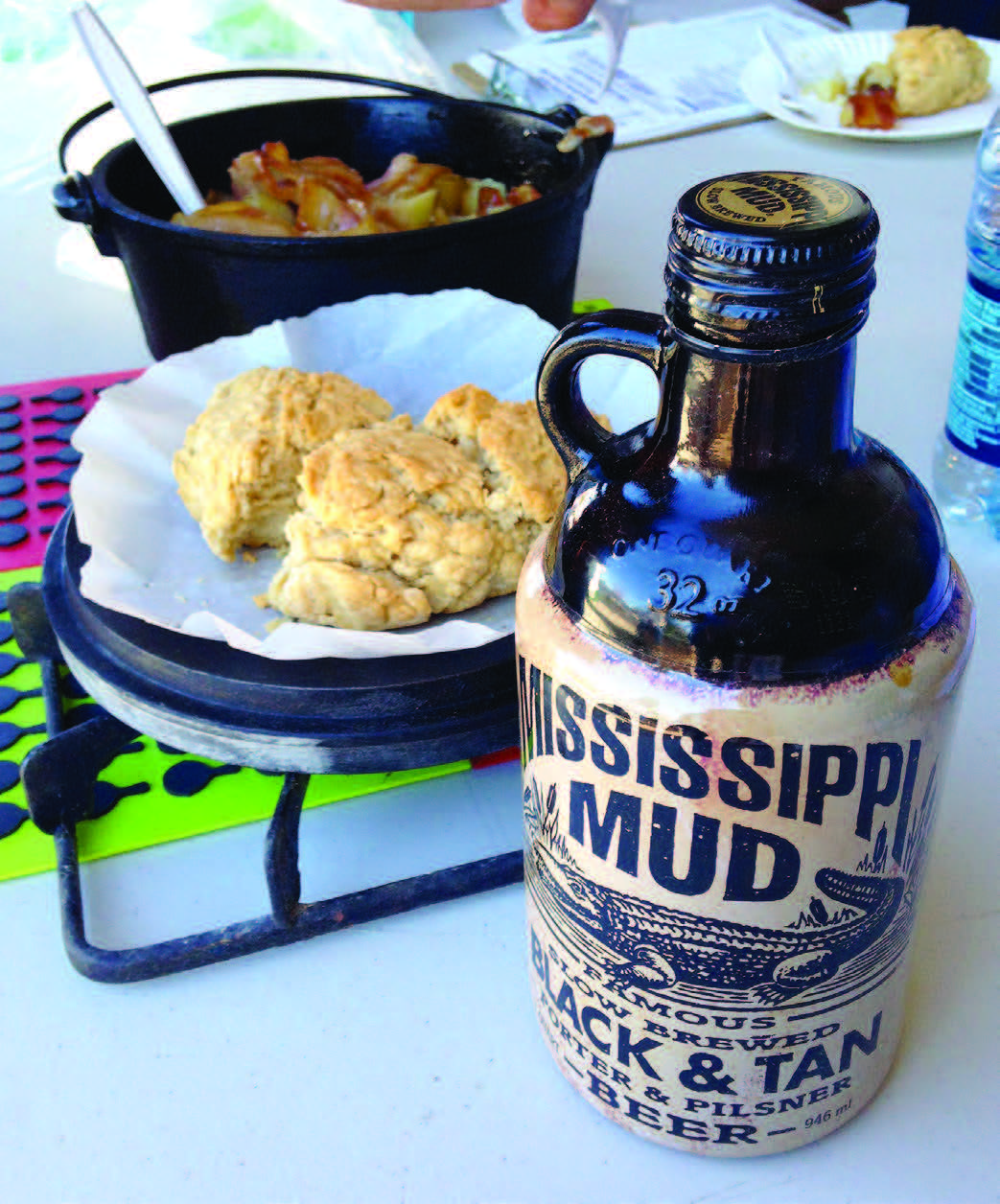 Cooking with unfamiliar methods can be daunting, especially when those methods include handling scorching coals. Those interested in the art are lucky, though, as there are organizations dedicated to Dutch oven cooking.
Cooking with unfamiliar methods can be daunting, especially when those methods include handling scorching coals. Those interested in the art are lucky, though, as there are organizations dedicated to Dutch oven cooking.
In northern Nevada, the Northern Sierra Dutch Oven Group (NSDOG) provides opportunities for Dutch oven cooks of all skill levels to practice, learn, and share the art. Started in 2009, the group is comprised entirely of volunteers who have a love for Dutch oven cooking.
“Our mission is to welcome all Dutch oven cooks of all experience levels, new to seasoned,” says NSDOG organizer Crystal Parrish.
Each year, NSDOG takes part in the Genoa Cowboy Festival, offers classes at Washoe Lake State Park, hosts a Dutch oven cook-off at Sportsman’s Warehouse in Reno, and works with the Mason T. Ortiz Youth Outdoor Skills Camp, which among other activities allows children to prepare lunch for themselves and their parents using Dutch ovens.
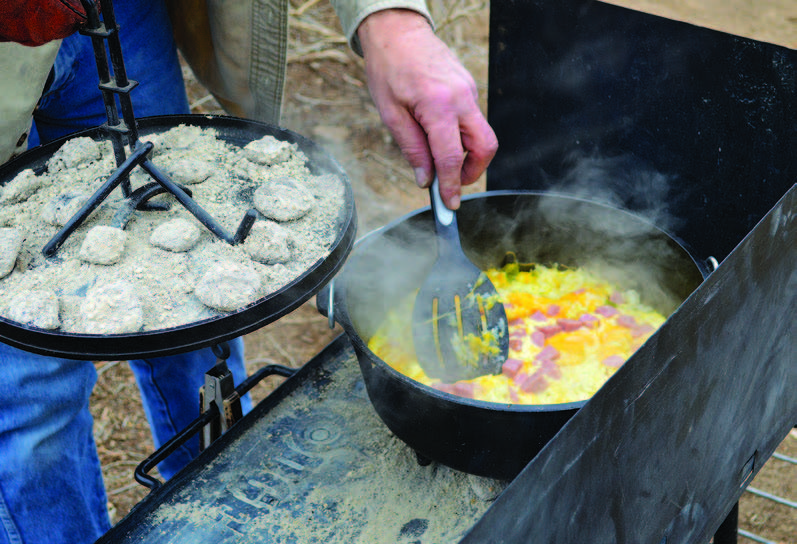
In addition, NSDOG has a Dutch oven cookbook for sale and class information on its website sierradutchoven.com.
PUT SOME HEART INTO IT
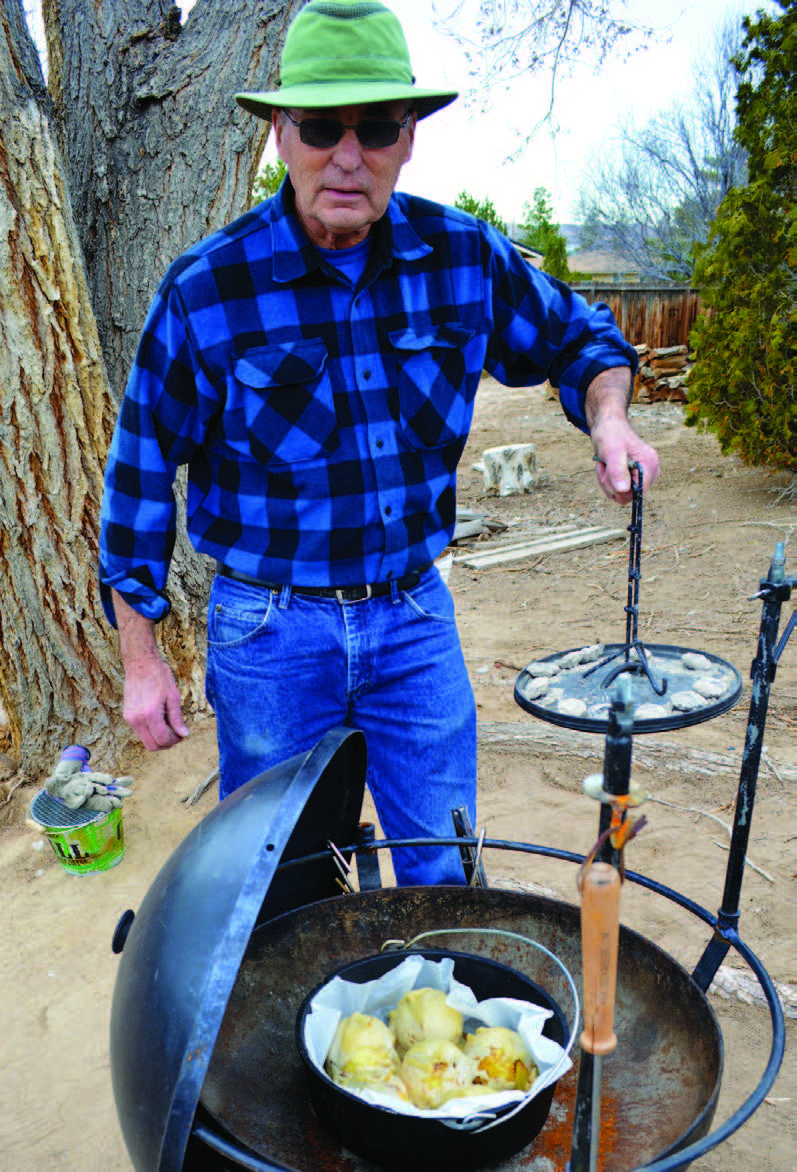
Though I don’t consider myself a seasoned Dutch oven cook, my grandfather, Paul McKee, and I never miss a chance to test out our skills, particularly when there’s game meat in the freezer. As luck would have it, in March, I happened to have an elk heart in desperate need of being cooked. We met at his friend Rick Joyce’s house, and each cooked a different Dutch oven meal.
The ovens come in different sizes, and on that day both Rick and my grandfather were cooking in 12-inch ovens, while I prepared the heart in a smaller 10-inch. The mismatched menu featured a breakfast bake—hash browns covered with ham, eggs, onions, cheese, and garlic—and my grandfather’s apple dumplings—peeled and cored tart apples wrapped in piecrust dough and topped with cinnamon, butter, brown sugar, and touch of brandy. In addition, my elk heart was stuffed with turkey stuffing and pinenuts, and cooked for about two hours in a bath of fresh apples, lemon juice, and orange juice.
Dutch oven cooking is all about finding the right ratio of coals to ensure the right temperature. Because heat rises, more coals are required on the top of the oven to keep even heat. For example, to achieve a temperature of 350 degrees on a 10-inch oven, 14 coals must be placed on the lid, while 7 must be placed underneath.
As we cook, the scent of apples, onions, and searing heart emanate from the ovens, and despite the odd combination, smells incredible. Rick adds a piece of Dutch oven wisdom.
“You can always tell when the food is ready to eat when it starts smelling really good,” he says.
The meal is delicious, and given that each dish is done at separate times, we have the chance to enjoy them individually. First, we try the breakfast bake, then the dumplings. Finally, we dig into the heart. Though there are countless heart recipes in many Dutch oven cookbooks, the taste of this muscular organ is not for the faint of heart. We each muster up the courage to eat a slice, then promptly place the rest in Tupperware to love at a later date.
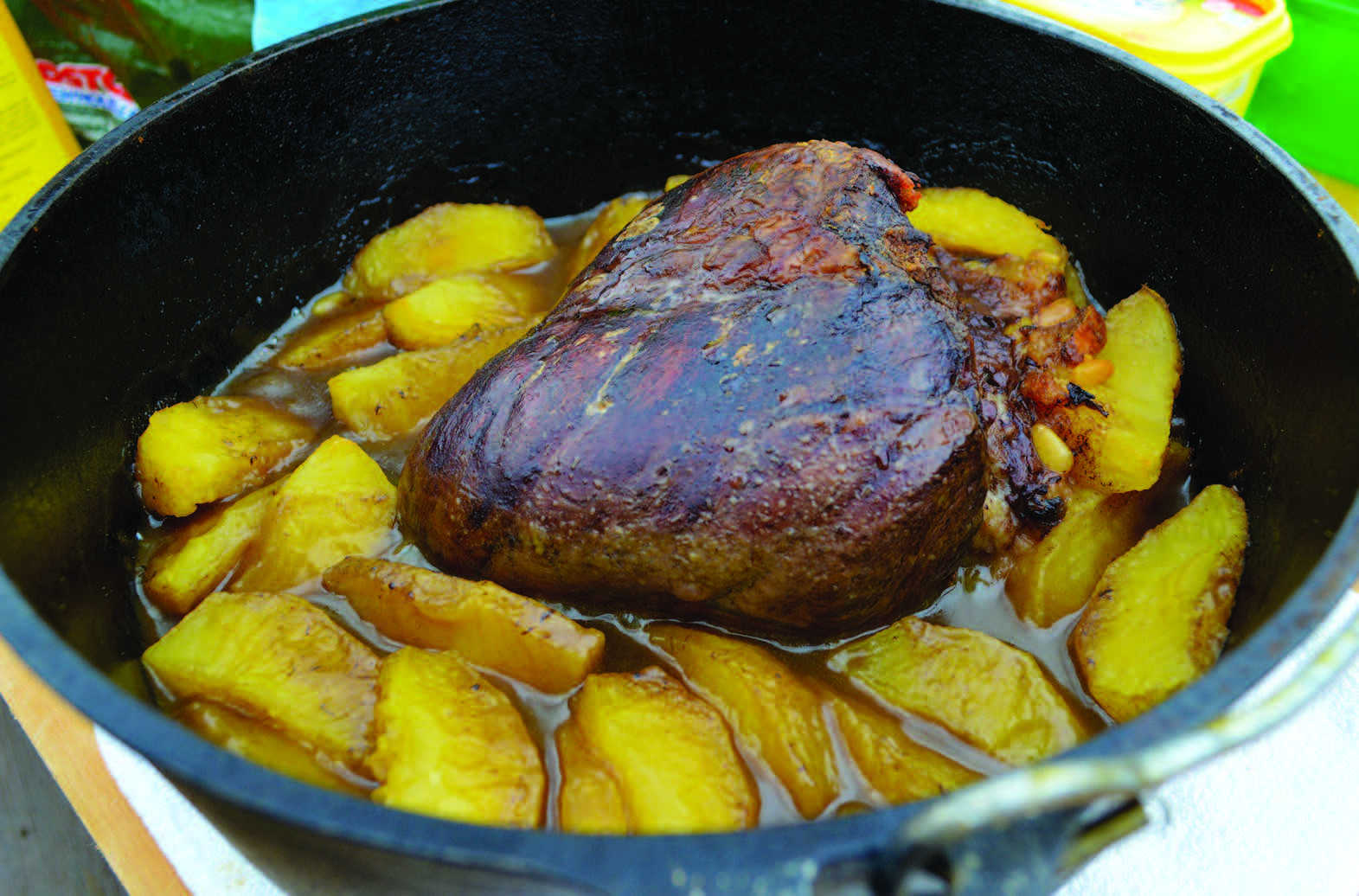
Cleaning a Dutch oven really isn’t too bad when you have the satisfaction of a fully belly. Well-seasoned cast iron is easy to wipe out with paper towels, and having a roll or two on hand is crucial. Besides cleaning the oven, paper towels can be used as napkins, place mats, campfire enhancers, and even makeshift bibs for messy eaters.
ELEVATED IN IRON
A Dutch oven is a fun way to spice up cooking. And once you experience how much better a Dutch oven meal tastes, you’ll agree. Just don’t forget the paper towels and beer.

